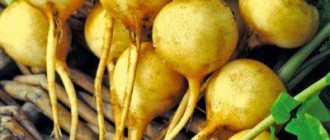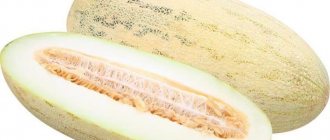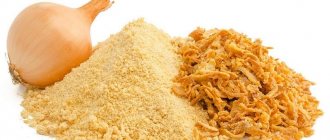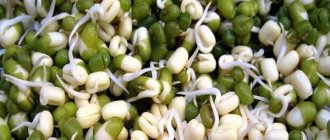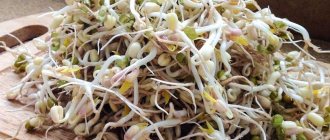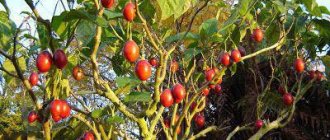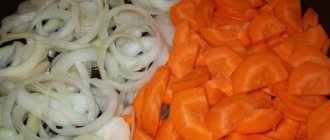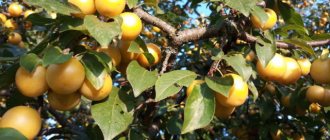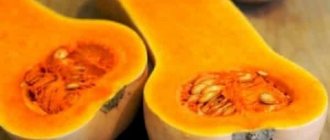Description of shallots
Shallots are a perennial herbaceous plant. Due to the formation of so-called nests, it has two more names: familial or multi-primordial. Its root is weakly branched, fibrous, located in the arable layers. The leaves have a cone-shaped tubular shape, rather thin and fragile. Shallot feathers can be in different green shades: sometimes closer to light green, and sometimes a rich dark green color. The weight of the bulbs varies from 20 to 50 g.
Hybrid varieties can weigh much more - up to 100 g. Inside, the scales are white with a purple or pink tint. Shallot seeds can be stored for 2 to 3 years without losing their properties for planting.
Shallots keep well at home until planted in the spring. If grown in warmer areas, it is quite dark in color and has a slightly pungent flavor. When grown in cooler areas, shallots are hotter, with piquant notes.
How is it different from onions?
Shallots are a bit like onions, but much smaller in size.
It is characterized by early ripening and high productivity. Thanks to its good winter hardiness, it can withstand low temperatures, which allows it to be planted before winter. Shallot feathers grow very quickly, and the onion itself can be harvested much earlier than regular onions.
Shallots can only be propagated vegetatively. But it is worth remembering that over time it can lose varietal qualities and accumulate diseases that can contribute to a decrease in yield. In this situation, it is recommended to purchase fresher bulbs for planting, or try to grow them yourself.
When sown, onions are a bit like garlic - they form a multi-bud bulb that breaks into several parts. Subsequently, they produce nests in which a considerable number of new buds will appear.
Usage
The best known use of shallots is in cooking. It is used as an ingredient for preparing various dishes; greens are cut into salads. Small onions and feathers are frozen or pickled. When fresh, shallots can act as a substitute for onions. But it can also be used in dietary and therapeutic nutrition, to fight diseases and prevent various ailments. The properties of shallots are similar to regular onions and will act on the body in the same way.
Useful properties of shallots
In terms of the number of useful components, shallots are almost no different from regular onions. Its feathers and the fruit itself are rich in essential oils, carotenoids, minerals, vitamins C and B. There is much more sugar in the composition. The vegetable contains potassium, phosphorus, iron, calcium, chromium, silicon, etc.
In folk medicine, shallots are used to treat eye diseases and gastrointestinal pathologies.
In the kitchen, shallots are added to many dishes. Its feathers and bulbs are used in cooking: pickled or simply consumed fresh. This onion is highly valued by the French; various sauces and soups are made from it.
Popular varieties
There are many varieties of this onion; they are divided into early, mid-season and late. They differ in taste: spicy, semi-sharp, sweet. The difference between them is not only in taste, but also in the variety of colors of the scales, as well as in the number of bulbs in the nest.
Early varieties:
- Belozerets 94 - famous for its good yield, has round or slightly oval bulbs, the taste is quite spicy, the color has a lilac husk with a yellowish tint, the inside is a purple bulb;
- Snowball - preserves well and lasts a long time, has a spicy taste, weight of one onion is about 30 g;
- Emerald - has rounded bulbs in a pink husk with a brownish tint, each nest contains 5 rudiments with white flesh with a spicy aftertaste;
- Cascade - the weight of one bulb is about 35 g, this variety is well preserved and has a high yield;
- Sprint - characterized by early ripening, resistant to various diseases, has large bulbs up to 40 g, each nest contains up to a dozen rudiments;
- Family - has a semi-sharp taste, ripe buds weigh up to 20 g, each nest contains no more than 4 bulbs, is well resistant to diseases, and is stored for a long time.
In addition to these varieties, there are still quite a few others, such as: SIR 7, Interseasonal, Sibirsky, Zvezdochka, etc.
Mid-season varieties:
- Kuban yellow - characterized by a semi-sharp taste, has up to 4 bulbs weighing 20-30 g each;
- Kainarsky - has brown-pink bulbs with a pungent flavor, weight up to 25 g, pulp of a lilac-white hue;
- Albik is a fairly productive variety with fruits up to 30 g, well preserved, each nest can contain up to 8 rudiments.
These shallot varieties also include: Firebird, Garant, Seryozhka, Atlas, Afonya, Uralsky and others.
Late varieties:
- Robust - slightly spicy, well resistant to diseases, weight from 25-50 g, pink-red scales;
- Bergalinsky - has large fruits 50-90 g, in each nest up to 6 bulbs, famous for its good yield;
- Kunak - with a slightly pungent taste, has oval-flat bulbs, each nest can contain up to 4 rudiments.
Late varieties also include: Siberian Amber, Vonsky, etc.
Popular varieties of shallots
Shallots have their own varieties. There are a large number of them, and they differ into special groups: early ripening, mid-ripening and late ripening. Gardeners generalize shallots into 2 groups:
- Ancient - varieties are distinguished that have different ripening periods. They can be late harvest or early. This onion is distinguished by the varied shades of the upper husk. It often comes in brown, red, yellow or purple hues. Such plants include Snezhok, Gornyak, Albik, Seryozhka, Zvezda.
- Bushes are an early ripening variety with many rudiments. This type includes species with small and fairly densely spaced heads. The tone of the husk is predominantly yellow or pale yellow: Emerald, Garant, Airat, Guran, Banana .
Family onions are divided according to their pungency into semi-sweet, spicy and tender-sweet types.
Experienced gardeners identify among the many different types of shallots the most popular in terms of ripening :
- early ripening - Belozerets, Vitamin, Izumrud, Cascade, Family;
- mid-season - Andreika, Albik, Airat, Bonilla, Kubansky;
- late varieties - Ural Violet, Siberian Yantar, Vonsky, Krepysh, Bargalinsky.
Thus, before planting, it is recommended to decide what type of shallot is required - bitter or sweet, early harvest or late ripening.
Landing dates
By planting shallots correctly, you can get a vitamin product by the beginning of summer. To do this, you need to know the timing of planting crops in the spring and before winter.
Planting shallots for spring
You can plant shallots on feathers and turnips. The rudiments are planted in the soil closer to March-April. By this time, the soil is warming up well, which will produce green feathers already in May, and the turnip itself closer to June.
Landing for the winter
To get early greens, you can plant onions closer to winter. To do this, planting should be done closer to October. It is necessary to take into account that during this time the onion should have time to take root, but not germinate. Planting before winter will produce greens by April, and bulbs closer to June.
Preparing for planting shallots in open ground
To avoid unexpected results after planting shallots, first place them in a well-lit area. It should be planted as far as possible from onions - shallots easily cross with them, resulting in a dubious harvest.
How to prepare the soil
This type of onion loves loose and moist soil. The ground should be slightly prepared for planting shallots. Grows quite well in humus sandy loams. If shallots are planted in the spring, then the soil needs to be processed in the fall: clear it of unwanted vegetation, dig it up and add fertilizer.
To prepare the fertilizer you will need: 4 kg of compost or humus, 1 tsp. superphosphate, 1 tsp. urea, 3 tbsp. l. ash.
This composition is designed for 1 m². In early spring, before planting onions, you should fertilize the soil with nitrogen fertilizer. In order to plant shallots in the fall or winter, the soil should be prepared in the summer.
After what crops can shallots be planted?
This crop requires strict adherence to crop rotation. Some of the best vegetables that were once planted in the area where shallots are planned to be grown are: tomatoes, potatoes, cabbage, cucumbers, zucchini, legumes.
It is not recommended to plant onions in places where corn, sunflowers, garlic, beets and carrots most recently grew. You can’t plant them in the place where these vegetables grew, but placing some of them nearby will be useful. For example, carrots protect shallots from insect pests due to their specific smell. It’s the same with shallots - they also repel many pests, making the carrots grow larger and sweeter. It is useful to plant any greens, strawberries, cucumbers and radishes with shallots.
It is worth taking into account that shallots can be planted in their original place 3 years after harvest.
The principle of planting shallots in open ground
Before planting shallots, it is necessary to process the sets. First you need to sort the bulbs. For planting, rudiments with a diameter of about 3 cm and a weight of about 30 g are perfect. Properly selected seed material will produce as many bulbs as possible. Small bulbs do not contribute to good yield, but they can be used for sowing for the winter. Large bulbs will not work either - they will form a lot of small buds.
Approximately 7 days before planting, for preventive purposes, the seed should be treated against fungal diseases. To do this, you need to soak the sets for 10 hours in water at 42 °C. If for some reason this was not possible, then you can carry out a quick treatment: half an hour before planting, keep the seedlings in a solution of potassium permanganate or fungicide.
How to place seedlings in the garden bed
The bulbs are placed next to each other at a distance of 10 cm. There should be an interval of about 30 cm between the rows for large varieties, about 15 cm for medium ones, 10 cm for small ones. Plant the seed at a depth so that a layer of soil of about 3 cm can still be placed above it.
Planting too deep can cause a delay in the appearance of greenery, which in fact will significantly reduce the yield. If planted shallowly, the onion will stick out of the soil as it grows, which is also not good. It should be planted in moist soil, and then treat the area with humus or peat.
It is worth paying attention: in order to speed up the growth of greenery, before planting the bulbs you need to cut them to the shoulders, but in this case the yield of greenery and the onion itself may decrease.
Conclusions from the results of the first year experiment
- shallots and specifically selected varieties showed themselves perfectly in our conditions of Southern Siberia;
- According to the main indicators, the results obtained are close to those stated in the description of the varieties, with the exception of the period from mass germination to lodging. The description says 55-60 days, we have 65-70. Perhaps the difference is explained by the difference in determining the moment of mass germination and lodging;
- Krasnoobsky variety showed itself best of all , especially in terms of yield, both in weight and in the number of bulbs;
- onion weight gain (ratio of harvest weight to planting weight) excluding greens by 10-16 times;
- The leaves (feather) of all varieties are excellent, the smallest are those of the jasper variety. All varieties have turnips that are more tender and juicy than onions;
- suffered slightly from onion, except for the Ural purple. It is impossible to make an unambiguous conclusion about the reason: either it depends on the variety or is an accident;
- It was not possible to arrange onion greens for sale in stalls. The owners do not want to take it due to low demand. On the local market, the cost of a bundle weighing 100 grams is 20-35 rubles. There are very few buyers. You can sell 3-5 bunches per day, if you’re lucky -10.
- Is it profitable to grow shallots? The question is not simple. If you grow it specifically for sale, you should take a closer look at the experience of Roman Alyev. And if in the garden or at the dacha, then the reward will most likely be a wonderful vegetable that you cannot buy in the store.
I suggest watching a video about how a village resident first sold the onions she grew for herbs. When I watched this video, my mouth involuntarily stretched into a smile, because when I brought my shallots for sale for the first time, I had almost the same thing. I'm sure you won't regret it!
In this video you can see the entire course of the first year experiment
How to plant shallots in spring
Caring for this vegetable crop is not at all difficult.
She is easy to care for and requires very little:
- proper watering;
- loosening and weeding beds;
- fertilizing done on time;
- protection from diseases and insect pests.
It is recommended to loosen the soil once or twice every 10 days. Control of weeds and insects is required regularly.
In order to get a large harvest in the future, the seedlings must be thinned out in early June. It is very important at this time to try not to fertilize and water, otherwise, instead of increasing the size of the bulbs, the growth of feathers will continue. As soon as arrows begin to appear on the bow, they need to be broken off. It is important not to allow them to exceed the maximum possible length - 10 cm.
Growing from seeds
Constant propagation of onions by vegetative means leads to shredding of the bulbs, as well as a decrease in yield and susceptibility to various diseases. To avoid this, it is recommended to change the seed at least once every 10-15 years. For this, it is best to grow from seeds. Shallot seeds sown in the spring produce small sets by September. Next year they will be suitable for planting a new batch of onions.
Growing seedlings
In order for onion seedlings to take root, you need to know how to plant them correctly and how to care for them. Typically, seedlings are ready for planting by the end of May. Two weeks before the “relocation” it is necessary to fertilize the soil with the addition of humus, saltpeter, potassium salt and wood ash.
It is necessary to plant onions every 10 cm, with an interval of 20 cm between rows. This will leave room for nests to form. Next, the seedlings are well watered and sprinkled with a 4 cm layer of peat. It is recommended to shade the seedlings for 3 days, this way they will take root better. It is advisable to choose cloudy days for planting.
Second year of experiment
The goals and objectives in the second year of the experiment were much more modest than in the first:
- try growing shallots before winter;
- check the possibility of growing seeds;
- continue reproduction.
Growing before winter
The undoubted advantage of autumn planting is that there is no need for winter storage of large amounts of planting material, the development of plants that take root in the fall and effectively use spring moisture reserves is significantly accelerated. Bulbs ripen 8-12 days earlier than during spring planting. Harvesting of greenery begins already in the first half of June.
The bed was covered with a 7-8 cm layer of dry leaves and covered with a sheet of old polycarbonate
However, there is a danger of the planting bulbs dying from freezing. Therefore, for pre-winter planting, we chose a local onion variety so as not to risk the main varieties.
The bed was planted in the first half of October, following the agricultural practices of spring planting. According to the recommendation, planting is carried out on September 20-30 to a depth of at least 5-6 cm. But the autumn was warm, so they planted later. But with the planting depth, apparently, there was a mistake. According to the recommendation, the planting depth was meant from the surface of the earth to the bottom of the bulb, but we understood differently - to the neck of the bulb.
As soon as the ground dried out in the spring, the leaves were removed
The error appeared already in the summer: it was very difficult to separate the bulb from the family, often several were broken off at once, and sometimes the entire nest was destroyed. In addition, smaller, elongated bulbs were formed.
May, 23rd.
A bed of winter-planted shallots. Below on the right are onion shoots of the Batya variety. The distance between the bulbs in the row was 10 cm, between the rows 20 cm. This turned out to be not enough. The leaves, which are thin on shallots, thinner than onions, grew in rather spreading bushes and it was very difficult to loosen the soil and remove weeds.
The tips of the onions began to turn yellow quite early. I had to treat it twice with solutions whose composition was found on the Internet. Such treatments did not bring any noticeable benefit. Perhaps the early yellowing of the tips of the leaves, especially the outer ones, is due to bad weather conditions. The central leaves grew healthy.
Conclusions about planting shallots before winter:
— you don’t have to worry about the death of onions from freezing;
- the layer of soil from its surface to the bulb should be 3-4 cm;
- the distance between the bulbs in a row and between rows should be 5-6 cm greater than during spring planting;
— it is advisable to use onion varieties specifically designed for planting before winter.
What grew from onions left in storage for propagation
The shallot harvest was stored in five boxes stacked on top of each other in a stoker until mid-winter.
It is clear that due to the operation of the heating boiler, the temperature in the firebox jumped noticeably, so we moved the boxes to one of the rooms, which served as a utility room. At the same time, they went through all the onions. The percentage of waste was about 10%. These varieties of shallots have been preserved from last year.
It is known that shallots reproduce vegetatively and by seeds. With prolonged vegetative propagation, planting material accumulates diseases and, above all, viral infections. This significantly reduces the yield, size and quality of the bulbs. The variety is degenerating. Therefore, it is necessary to interrupt vegetative propagation by seed every 7-9 years (preferably 5-6).
This implies the need to be able to obtain seeds and grow planting material yourself. In the previous year, not a single arrow grew in our experimental bed. This time, two weeks before planting, we placed 8 onions in the refrigerator, 2 of each variety. In the hope that some of them will give arrows. Krasnoobsky did not participate, because it's a hybrid.
Three arrows with inflorescences of the Batya variety
The idea to obtain shallot seeds was a success. Of the eight selected bulbs, one of the Batya variety and one of the Jasper variety produced inflorescences, which is normal. Last year there were no arrows.
The changes did not bypass the pre-planting preparation of the bulbs. Thus, disinfection was carried out by soaking in a solution of a new composition (instead of soaking in a solution of potassium permanganate):
- Dissolve in 0.5 liters of water;
- 3 tablespoons dishwashing detergent;
- 25 ml pharmaceutical turpentine;
- 1 incomplete spoon of iron sulfate;
- 1 tablespoon of any humate.
Soaking shallots in a solution of a new composition
Soaking time is more than three hours.
In total, we planted 1 bed of 5 m2 of the Batya variety, 1 bed of 5 m2 - Debut, 1.5 beds of 7.5 m2 - Krasnoobsky, 0.5 beds of 2.5 m2 - Jasper, a little - Ural purple.
This time we tried to follow the same agricultural practices for shallots as last year. But due to busyness, one technique was still neglected, namely the frequency of loosening. It is quite possible that insufficient loosening was the main reason for the proliferation of onion fly larvae. Even in the first stages of growth, a clear lag in development of some plants was noticeable, and some did not emerge at all.
Trying to find out the reason, we dug up diseased plants and examined them carefully. Some of the planting bulbs were not found at all: they had already completely rotted. Some of it turned into some kind of soft slimy mass with a foul odor. No larvae could be found. I had to delve deeper into the problem. To date, the following description of the disease has been accepted for our case:
Of the bulb diseases, the most harmful is wet bacterial rot. In the first stages of development, it is difficult to determine by visual inspection. Gradually, the juicy scales macerate (dissolution of the intercellular substance) with the release of brown pigment. Sometimes the disease can be found on the inner scales of the bulb, under the healthy outer ones. In affected bulbs, dormant buds very often begin to grow. The fabric becomes soft, slimy, and acquires an unpleasant odor. By the end of storage, the bulb completely rots; when stored warmly, it dries out and acquires a dark brown color. Losses can range from 3 to 35%.
Infection occurs during the growing season, largely in wet years; onion flies can contribute to the spread of bacterial diseases.
But a large proportion of the bulbs were damaged by onion fly larvae.
The places of non-emergent plants of the Batya variety
. We tried to fight the larvae of the onion fly and onion hoverfly. They watered it with solutions of different compositions, all to no avail. Fly larvae are very tenacious; once they have gotten into the bulbs, nothing can kill them. Hence the conclusion: it is necessary to fight not so much with larvae, especially at a later stage, as with flies at an early stage. I got two ideas on how to fight. These may not be my ideas, but they came to mind quite recently, and I’ll tell you about them at the very end of the article.
It was a great pity to throw away damaged plants, so we decided to outwit everyone: from the least damaged plants we shook out and picked out all the larvae, then for a while the plants were placed in a disinfectant solution. After the executions were carried out, they were planted again in the garden beds. But this radical measure did not help: all the plants died.
Next to the beds of shallots were beds of turnip onions. For some reason, the onion fly did not touch them: only a few bulbs were damaged. The conclusion suggests itself: the degree of damage by the onion fly depends on the type and variety of onion. Perhaps this explains the fact that the Krasnoobsky variety suffered the least from the onion fly: after all, it is a hybrid of shallots and turnip onions.
Planting onions before winter
Winter planting is not much different from spring planting. Everything happens in the same order, but only with mulching the area with peat in a layer of 4 cm. For the winter, shallots are planted a little deeper.
You shouldn’t pay much attention to the fact that shallots are a frost-resistant vegetable crop.
It is best to plant the crop in the southern regions before winter, otherwise there is a risk that half of the bulbs will die from the cold. This is the only disadvantage that should be taken into account when planting before winter. But there are also positive aspects: bulbs that have withstood winter frosts well produce much more greenery than when planted in the spring. Shallot feathers appear after the snow melts.
Growing and care
In order to properly grow a crop, it is important to fertilize on time and do proper watering; the quantity and size of the future harvest will depend on this.
How to water
During the season, shallots require watering at least 3 times. The most important thing is to ensure good soil moisture at the beginning of the vegetable growing season. It is not recommended to water a month before harvesting.
One of the main rules in caring for shallots is to prevent the soil from drying out. If the weather is rainy in summer, watering should be reduced, and when it is dry and hot outside, it should be done more often. In the absence of precipitation, watering is carried out once every 7 days. Providing the vegetable with optimal soil moisture will guarantee that the crop will “thank you” with a generous harvest.
What to feed
Regular fertilizing plays a significant role in caring for shallots. Shallots love bird droppings fertilizer. To do this, it is enough to dilute it in a ratio of 1:15 and apply it to the soil. You can also use mullein infusion. This fertilizer should be diluted in a ratio of 1:10. You can use mineral fertilizers; to do this, just take 50 g of fertilizer and dilute it in 12 liters of water.
Do not forget that 4 weeks before harvesting, all procedures should be stopped, otherwise the onion will grow feathers rather than the bulb itself.
In order for the shallots to grow large, after forming the nests, you should rake the soil a little and break off the small bulbs along with the green part. There is no need to throw them away; they are perfect for eating.
Plant care
Shallots are a hardy plant. To get a rich harvest, it needs to be properly cared for. It involves regular watering, weeding, fertilizing, prevention of infections and harmful insects.
Watering
Shallots are watered as the top layer of soil dries out, on average 3-4 times a week. Use warm, settled water. Watering is carried out early in the morning or in the evening.
3 weeks before harvesting root crops, the frequency of watering is gradually reduced. This will make the taste of shallots richer and increase shelf life.
A day after each watering and precipitation, the soil is loosened. When loosening, the beds are cleared of weeds.
Top dressing
If the soil for planting shallots has been prepared correctly, then only 2 feedings will be needed per season. Use the following scheme:
- The nutritional composition is first introduced after the third feather is thrown out. Use a mixture prepared from 10 liters of water, 1 tbsp. l. urea, 0.5 tsp. potassium nitrate.
- The shallots are fed a second time after the formation of the 5th feather. A solution prepared from 10 liters of water and 1 tbsp is added to the soil. l. "Monopotassium phosphate."
A short video about crop care:
How to Grow Shallots in One Season
To grow shallots in one season, experienced gardeners obtain them using seedlings. To do this, you need to take the following steps:
- plant the seeds prepared in advance in boxes at home;
- sow them at the end of February;
- for quick germination of seeds, before planting you can keep them in fresh aloe juice;
- use coarse soil for planting;
- create drainage holes at the bottom of the box;
- A prerequisite is to fertilize the soil with humus or peat;
- sowing must be done in small holes at a distance of 3 cm from each other;
- The last stage is filling the seeds with soil, watering and creating a greenhouse effect (making a shelter).
As soon as the first shoots appear, you can moisten the soil. It will be possible to plant bulb seedlings already in April, after the third feather has formed.
While the onion is growing outdoors, it is important to provide the vegetable with proper watering and timely fertilizing. With proper care, harvesting can begin as early as late August or early September.
Planting on greens
Very often, shallots are grown to produce greens. It does not shoot and does not lose its beneficial taste properties when frozen. This type of onion is one of the most cost-effective for producing greens. Its feathers are cut off when they reach a height of 25 cm. This usually happens a month after planting.
To obtain greens, shallots are planted not only in the open air, but also in special boxes in apartments or greenhouses. It is recommended to plant indoors no earlier than February, and after a month you can get the first harvest.
Experienced gardeners use the same bulbs several times. To do this, you need to cut the greens, cut the bulb a little below the middle and plant it in the same container, but with the addition of fresh soil. After some time, the planted bulbs again produce a crop of green feathers.
About the features of planting shallots in the ground, the nuances of cultivation - in the video.
Control of pests and diseases of onions
Many people know that cold and damp weather often precedes the plant being affected by a fungus (powdery mildew, downy mildew, fusarium and neck rot).
To prevent infection of healthy plants, it is important to remove diseased crops at the first sign. Healthy onion feathers should be sprayed with solutions: Quadris, Pentophage or Mikosan.
It is worth taking into account that after adding these drugs, onions will not be eaten for some time. The instructions for any of the products will indicate the duration of action of the chemical fertilizer.
To avoid the appearance of fungal diseases, you can treat onions with Maxim before planting. It is recommended to treat seeding bulbs that will be sown next year with the same.
One of the most annoying pests for shallots is the onion fly. It usually appears when cherry and dandelion trees begin to bloom. If a fly infects plants, the process of rotting and withering of the crop begins. You can get rid of the pest by spraying the onions with ash. If small worms appear, the onion should be treated with a mixture of water and salt: 1 tbsp. for 10 l.
Without exaggeration, the onion nematode can cause enormous harm to the plant. The disease bends the bottom of the mother's bulb. If an infected bulb is planted next to healthy plants, then no harvest can be expected - it will infect all healthy crops. Before planting infected seed, it is necessary to treat for an hour with hot water at about 45 °C or treat the seedlings in a Formalin solution.
Onion greens, like other plants in the garden, are loved by aphids. If its presence is not controlled, it will affect all the plants in the garden. There are enough natural methods to combat this pest (without the use of chemical additives).
Spraying with chamomile, decoctions of potato peels and pepper is often practiced. There are some commercial pest control products that do not harm the human body, including the drug Verticillin. It is acaricidal and fights this problem well.
Harvest
It is important to harvest on time, otherwise there is a possibility that the bulbs may germinate. Shallot nests are removed from the ground when most of their feathers have dried out. After removing the onions from the soil, dry them in the shade. After this, the dried leaves are carefully removed, and the nests are disassembled into bulbs. The harvest is placed in a box, net or box and stored in a cool, dark place where there is no high humidity.
Sometimes experienced summer residents do not trim dry feathers, but weave braids from them. In this way, you can extend the shelf life of onions, but do not forget to regularly check for rotten onions. This method will make it possible to preserve the product for 5 to 7 months.
Sometimes shallots are stored peeled, but this option can only be achieved by freezing the vegetable. You can store its feathers in the same way; it is recommended to chop the onion before freezing. Do not be afraid that after freezing shallots will lose their beneficial qualities - frozen onions will retain vitamins and important elements.
Growing shallots is not difficult, the main thing is to follow all the recommendations and fertilize on time. Do not forget about regular checking for the presence of insect pests, because the earlier the disease is detected, the more vegetables can be saved.
Harvest and storage
Harvesting begins after the greens become tough and first turn a little yellow and then fall off. The harvest should not begin before this, otherwise the shallots will not be stored well and will germinate ahead of schedule. The harvest is harvested early in the morning on a dry, sunny day and dried thoroughly under a canopy. The leaves of the bulbs are trimmed and then woven into clusters.
Store suspended in a dark place with good air access. You can leave them in the nets for a month, attaching them to the wall. Then the onion is sorted and the soil is removed from it.
You can store middle and late varieties for a year after collection:
- in boxes made of cardboard or wood;
- in baskets;
- on the bottom shelf in the refrigerator;
- in nylon stockings.
Bulbs require a temperature of +8...+10 °C, and sets +15...+20 °C. Humidity is maintained no higher than 60-70%.
